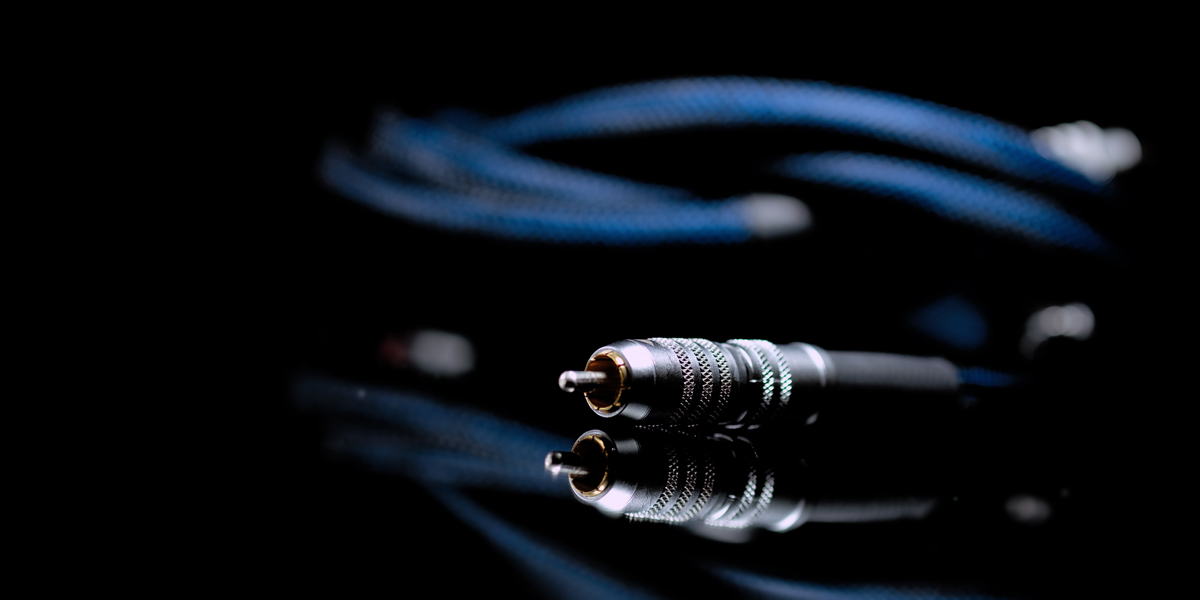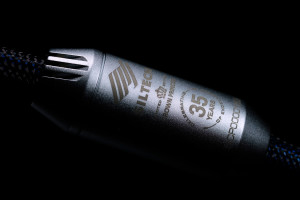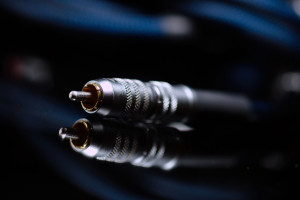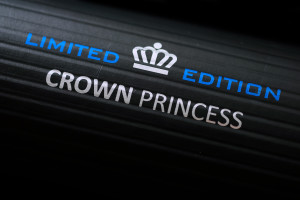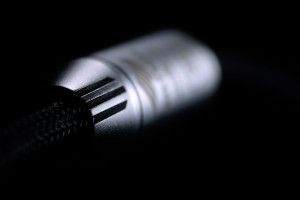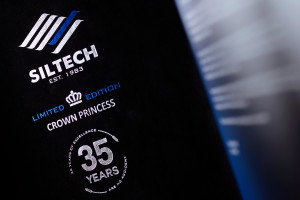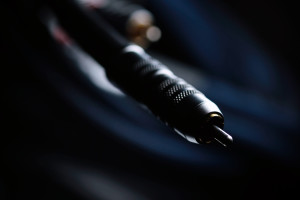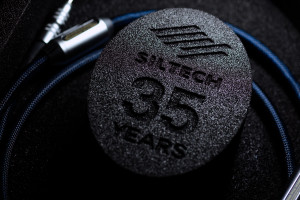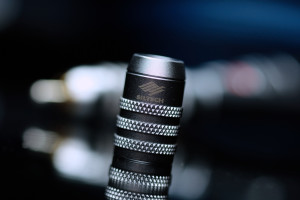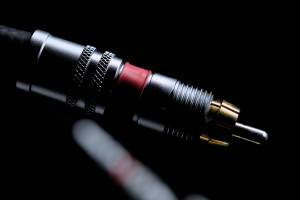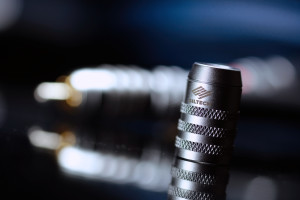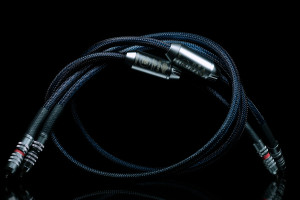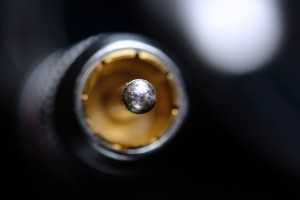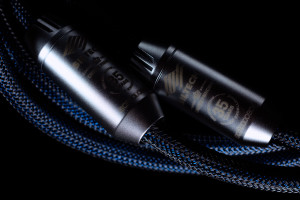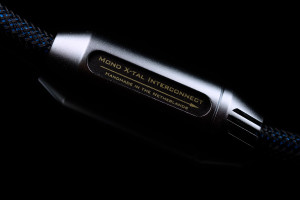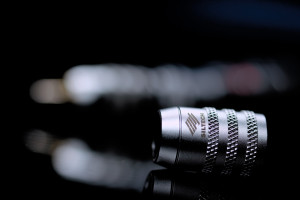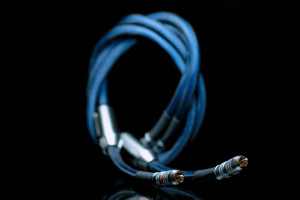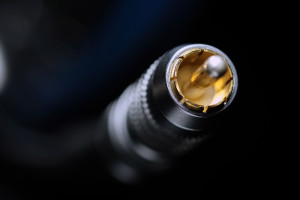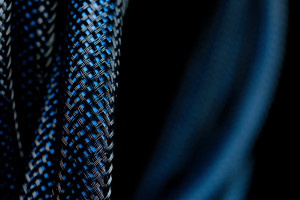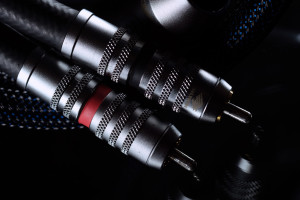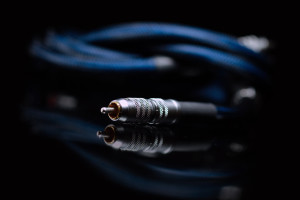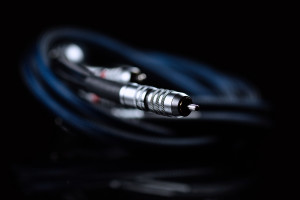If you’ve been ever wondering what an audio company 35 years in the cable business might come up with to celebrate such a long run, this review is my attempt to ease your curiosity. Siltech Crown Princess has arrived. Enjoy!
Introduction
Audio hardware is getting constantly pricier, many products considered as the pinnacle of quality years back, now occupy tiers mid or even lower. This status quo is very clearly seen on the headphone market. Unsurprisingly audio cables aren’t too far off, and due to several reasons now they’re more popular than ever. On the very basic level i.e. speaker or power snakes require fairly small amount of work, knowledge needed to DIY a working product at home is also minimal at best and oftentimes so is material input. Very easy access to OEM parts seals the deal. One can cherry pick to his/her heart’s content in plugs, conductors, insulators and everything else associated. All this indicates initial starting cost not steep at all. However, most newly established cable houses don’t last long and majority of survivors won’t go beyond small one-man hobbyist activities. Point being, the cable business might look easy on the surface, but in reality it’s anything but.
 For years I was convinced that the cable industry looks exactly as described above. Past many adventures with such products and talks with their makers, I still think that that’s how it goes in most cases, however not every single one fits the description. Fully flourished exceptions do exist and this report’s company – Siltech – is considered as one of the most known and distinguishable out there. Come to think of it, who knows? Perhaps that’s the one to beat on the cable turf? Many of my journo colleagues would say ‘aye’ to the idea. Daily not agreeable at all, this bunch is suspiciously like-minded when the Dutch talk is on. Once the opportunity revealed itself to finally have my own say in the matter, I was game. Siltech it is then.
For years I was convinced that the cable industry looks exactly as described above. Past many adventures with such products and talks with their makers, I still think that that’s how it goes in most cases, however not every single one fits the description. Fully flourished exceptions do exist and this report’s company – Siltech – is considered as one of the most known and distinguishable out there. Come to think of it, who knows? Perhaps that’s the one to beat on the cable turf? Many of my journo colleagues would say ‘aye’ to the idea. Daily not agreeable at all, this bunch is suspiciously like-minded when the Dutch talk is on. Once the opportunity revealed itself to finally have my own say in the matter, I was game. Siltech it is then.
 Siltech (a clever merger of words ‘silver’ and ‘technology’) was established in 1983 in Holland’s city of Arnhem, and from there it takes a 15 minutes long drive down south to its production line located in Elst. This operation’s CEO – Edwin Rijnveld – is an engineer by profession and amateur clarinettist. For years he didn’t believe in audio cables’ influence on sonics to radically change his mind on the subject at some point. One audition was all it took, then the question about the very reason of this experience was asked, which led to substantial investments. And since we’re at it, Edwin’s operation exploits tools many other cable houses can only dream of; COMSOL software physics platform developed by NASA, many measuring devices and also its very own furnace. All this hardware and software equals to six digits evaporated from one’s account, poof, just like so. Instead of going the off-spool OEM route just as almost everyone else, Siltech is one of very few audio establishments known for casting its own conductors accordingly to the in-house developed proprietary method. This factor of key importance is one of the major reasons behind Siltech’s success and also the industry phenomenon. Due to significant financial investments, vast majority of cable makers won’t ever go as far as Edwin did years ago. One of local cable houses – Albedo – has been rolling with its own in-house made silver conductors for years as well.
Siltech (a clever merger of words ‘silver’ and ‘technology’) was established in 1983 in Holland’s city of Arnhem, and from there it takes a 15 minutes long drive down south to its production line located in Elst. This operation’s CEO – Edwin Rijnveld – is an engineer by profession and amateur clarinettist. For years he didn’t believe in audio cables’ influence on sonics to radically change his mind on the subject at some point. One audition was all it took, then the question about the very reason of this experience was asked, which led to substantial investments. And since we’re at it, Edwin’s operation exploits tools many other cable houses can only dream of; COMSOL software physics platform developed by NASA, many measuring devices and also its very own furnace. All this hardware and software equals to six digits evaporated from one’s account, poof, just like so. Instead of going the off-spool OEM route just as almost everyone else, Siltech is one of very few audio establishments known for casting its own conductors accordingly to the in-house developed proprietary method. This factor of key importance is one of the major reasons behind Siltech’s success and also the industry phenomenon. Due to significant financial investments, vast majority of cable makers won’t ever go as far as Edwin did years ago. One of local cable houses – Albedo – has been rolling with its own in-house made silver conductors for years as well.
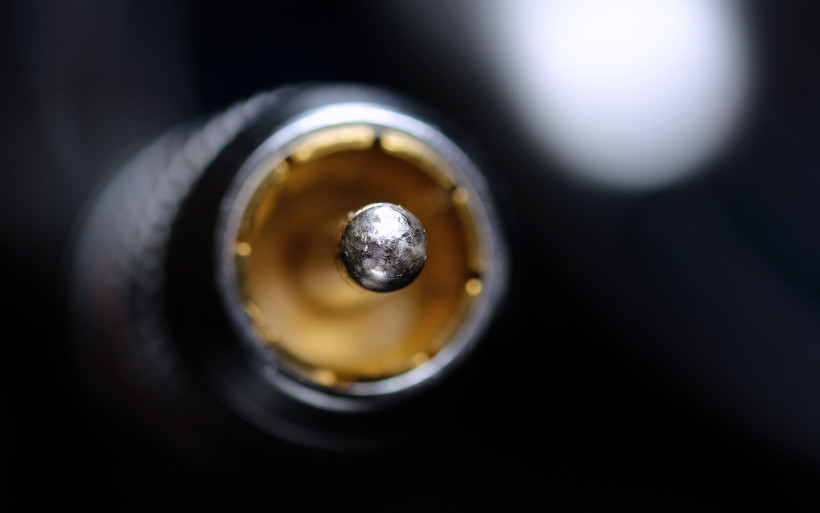 Several decades in the business, generously loaded machine park and many products said to be impressive, are all fitting reasons to now label Siltech as a company both well-known and liked. In spite of fairly gentle prices of its entry level tier, top shelf specimens are quite abstract on this count. However, in this company’s priciest and most prestigious goods yours truly sees a good reason behind its worldwide recognition. Audio cables in the ballpark of a nice car have always been the hot topic and most likely this won’t change anytime soon. Everyone knows Ferrari, even though only lucky few can afford it. In any case, Siltech’s decades old road map is marked with several milestones; the G5 Signature series in 2001, then Classic Anniversary, Royal Signature and the first Crown family all released in 2008, the monocrystalline Explorer line in 2011 and four springs later the top shelf Triple Crown range considered by many as the very best one money can buy. Today’s limited edition product – Siltech Crown Princess – is the latest yet not the priciest of its kind in Siltech’s portfolio, far from it. This downscaled Triple Crown specimen sold for far less represents 35 years of the company’s know-how, and as such is a statement on its own.
Several decades in the business, generously loaded machine park and many products said to be impressive, are all fitting reasons to now label Siltech as a company both well-known and liked. In spite of fairly gentle prices of its entry level tier, top shelf specimens are quite abstract on this count. However, in this company’s priciest and most prestigious goods yours truly sees a good reason behind its worldwide recognition. Audio cables in the ballpark of a nice car have always been the hot topic and most likely this won’t change anytime soon. Everyone knows Ferrari, even though only lucky few can afford it. In any case, Siltech’s decades old road map is marked with several milestones; the G5 Signature series in 2001, then Classic Anniversary, Royal Signature and the first Crown family all released in 2008, the monocrystalline Explorer line in 2011 and four springs later the top shelf Triple Crown range considered by many as the very best one money can buy. Today’s limited edition product – Siltech Crown Princess – is the latest yet not the priciest of its kind in Siltech’s portfolio, far from it. This downscaled Triple Crown specimen sold for far less represents 35 years of the company’s know-how, and as such is a statement on its own.
Build
Crown Princess is Siltech’s latest interconnect located in-between its Classic Anniversary and Crown series. Two 1.0m long sets were delivered in their respective large book-alike cardboards. Each inside made of velour and foam also housed a warranty card (8 years), large informational leaflet and that’s it. Truth told, I didn’t miss a thing and it’s difficult for me to imagine any addition capable of making the main dish – a cable – any more attractive. All products along the lines of today’s disappear behind our racks just as they should, hence nothing else needed is my point of view. YMMW, though.
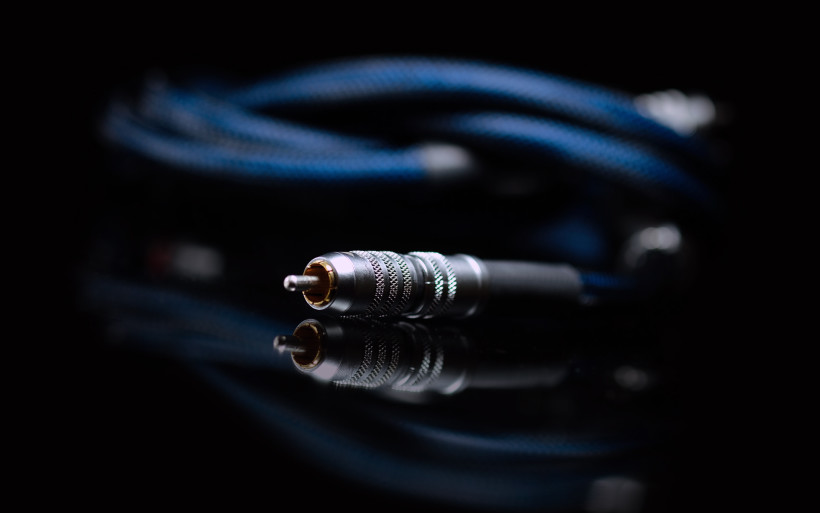 Technical info about Crown Princess is rather shy and my guess is that avoidance of any additional details was on purpose. Subjectively speaking, I agree with this approach, the chase after nines past commas never seemed any relevant to me. Siltech surely has a good reason to boast on this count, however purity is a part of something far greater, whereas the most interesting bit of knowledge, namely a conductor type, the Dutch team shared. Crown Princess is based on monocrystalline silver, however without any gold mixed in. The latter material is reserved for some of Siltech’s upper echelon goods.
Technical info about Crown Princess is rather shy and my guess is that avoidance of any additional details was on purpose. Subjectively speaking, I agree with this approach, the chase after nines past commas never seemed any relevant to me. Siltech surely has a good reason to boast on this count, however purity is a part of something far greater, whereas the most interesting bit of knowledge, namely a conductor type, the Dutch team shared. Crown Princess is based on monocrystalline silver, however without any gold mixed in. The latter material is reserved for some of Siltech’s upper echelon goods.
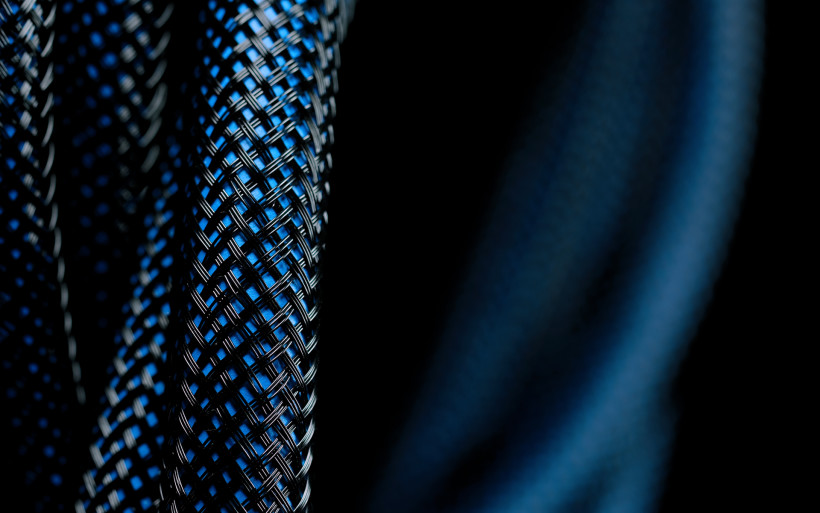 Let’s get the purity part out of the way. Cracks visible under a microscope in conductor’s crystalline structure are a natural obstacle for signal. The less of these fissures, the better, which a number of nines ( i.e. 99,9999) represents as a purity measure. However, when there are no cracks at all, then the talk is about a material with its internal structure monocrystalline. Needless to say, this goal is neither easy nor affordable. A very specific knowledge about casting and metallurgy is also required, due to i.e. monocrystalline conductors oftentimes not pulled but cast. That’s how Siltech does it. Certified factories capable of providing such a material are just several on our planet. Once this is taken into account and then topped via completely independent manufacturing exclusively on the Dutch soil, Edwin surely has a very good reason to be proud of what he and his team achieved thus far.
Let’s get the purity part out of the way. Cracks visible under a microscope in conductor’s crystalline structure are a natural obstacle for signal. The less of these fissures, the better, which a number of nines ( i.e. 99,9999) represents as a purity measure. However, when there are no cracks at all, then the talk is about a material with its internal structure monocrystalline. Needless to say, this goal is neither easy nor affordable. A very specific knowledge about casting and metallurgy is also required, due to i.e. monocrystalline conductors oftentimes not pulled but cast. That’s how Siltech does it. Certified factories capable of providing such a material are just several on our planet. Once this is taken into account and then topped via completely independent manufacturing exclusively on the Dutch soil, Edwin surely has a very good reason to be proud of what he and his team achieved thus far.
 Siltech’s colour scheme has been based on blue for years, which Crown Princess also shows. This model’s outer insulation is coloured like so, though coated via black braid and the effect looks interesting. Due to my setup’s demands, two sets provided were finished with RCAs. These are Siltech’s own locking SST models and their usage gave no reasons to complain. Crown Princess is also available with XLR terminations based either on one of basic models by Neutrik or Oyaide’s Focus 1. The former adds heft to the final tab. One side of each nicely made aluminium barrel (presumably with a filter inside) informs us about directivity of the product, whereas the other side of the same element sports the anniversary logo. Crown Princess is said to be limited, though there’s no info to what number, at least the two sets sent my way didn’t say. The item itself I’ve found ergonomically pleasing; flexible and quite thin.
Siltech’s colour scheme has been based on blue for years, which Crown Princess also shows. This model’s outer insulation is coloured like so, though coated via black braid and the effect looks interesting. Due to my setup’s demands, two sets provided were finished with RCAs. These are Siltech’s own locking SST models and their usage gave no reasons to complain. Crown Princess is also available with XLR terminations based either on one of basic models by Neutrik or Oyaide’s Focus 1. The former adds heft to the final tab. One side of each nicely made aluminium barrel (presumably with a filter inside) informs us about directivity of the product, whereas the other side of the same element sports the anniversary logo. Crown Princess is said to be limited, though there’s no info to what number, at least the two sets sent my way didn’t say. The item itself I’ve found ergonomically pleasing; flexible and quite thin.
Sound
In order to review Siltech Crown Princess, the usual suspects were used; fidata HFAS-S10U as a media storage/streamer and LampizatOr Pacific (KR Audio T-100 + KR Audio 5U4G Ltd. Ed.) handled the D/A work. From there the signal went to the Accuphase CD-2150/P-4500 team and next either to my Boenicke W8 or DearWolf’s Roe Deer floorstanders. Both pairs of Siltech’s ICs found their place in-between my DAC and hardware by Accuphase, whereas Amber modded Audiomica Laboratory Erys Excellence ICs were their main opponent. All key hardware was fed via LessLoss C-MARC power cords connected to the GigaWatt PC-3 SE EVO+, married to the main inlet via LC-3 EVO snake by the same manufacturer.
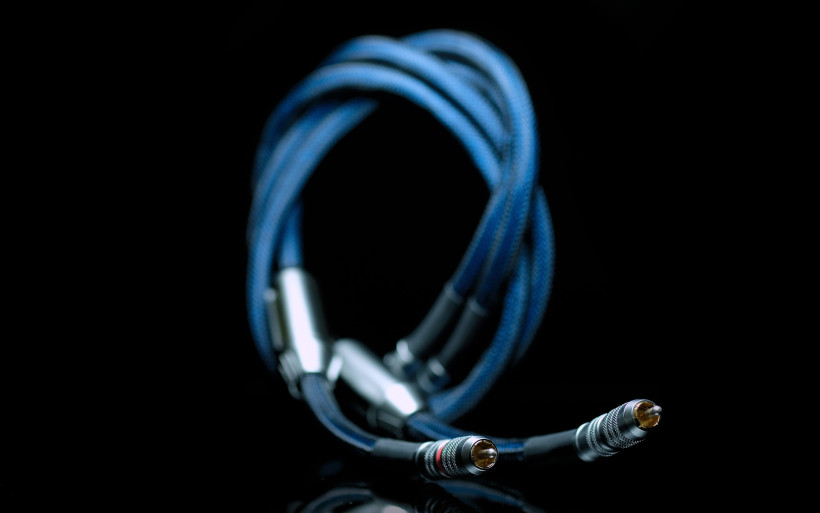 Prior to going any deeper into the Crown Princess case, I’ll allow myself to send several stereotypes into oblivion. The word on the street is that silver sounds just as it looks, namely fast and shiny, sharp even, hence it’s viewed by many as the exact opposite of what copper does. The former conductor then is said to be a remedy for setups thick, sluggish and stuffy, whereas the latter adds some colour and heft to rigs pale and soulless. Synergy and all that. Truth told, for years I agreed with this order as it was in fact valid in many cases, however my knowledge was based almost exclusively on the headphone branch, hence very limited. Put shortly, for years the big picture was elusive to my ears. As for headphone cables, these oftentimes fit the typical silver/copper description for a number of reasons. Their makers are in the business far shorter than i.e. Siltech, surely don’t manufacture their own conductors and still have a lot to learn. As harsh as this might sound, most won’t ever come close to what Edwin does.
Prior to going any deeper into the Crown Princess case, I’ll allow myself to send several stereotypes into oblivion. The word on the street is that silver sounds just as it looks, namely fast and shiny, sharp even, hence it’s viewed by many as the exact opposite of what copper does. The former conductor then is said to be a remedy for setups thick, sluggish and stuffy, whereas the latter adds some colour and heft to rigs pale and soulless. Synergy and all that. Truth told, for years I agreed with this order as it was in fact valid in many cases, however my knowledge was based almost exclusively on the headphone branch, hence very limited. Put shortly, for years the big picture was elusive to my ears. As for headphone cables, these oftentimes fit the typical silver/copper description for a number of reasons. Their makers are in the business far shorter than i.e. Siltech, surely don’t manufacture their own conductors and still have a lot to learn. As harsh as this might sound, most won’t ever come close to what Edwin does.
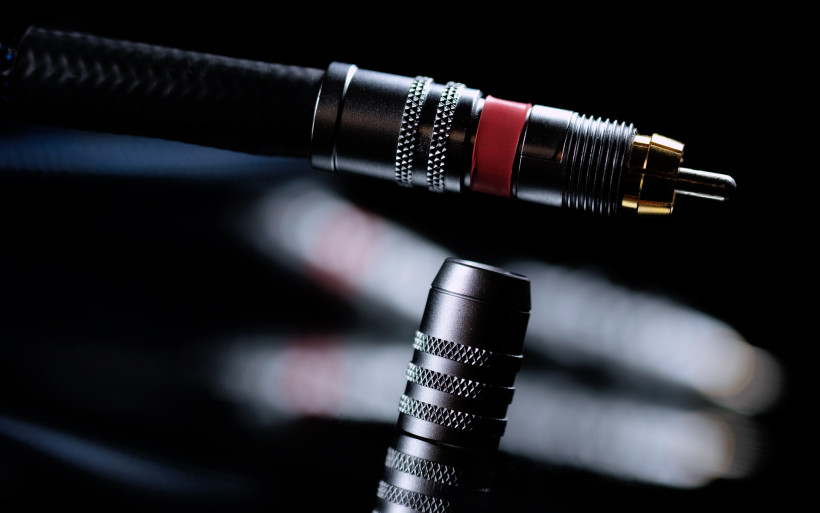 A good while ago one specific experience changed my point of view. I got the proof I needed to understand that not all silver is the same, hence my privy bias towards this very material changed significantly. The shock value introduced by Albedo Monolith loom cured me efficiently from any further attempts of putting all silver conductors in the same bag. But most importantly, if it weren’t for Albedo’s goods years back, Siltech Crown Princess would’ve educated me as swiftly and intensely just now. In an instant the Dutch product expressed clearly that with the stereotypically sharp and lifeless approach it has as much in common as yours truly with turntables, namely nothing. Due to its steep asking price something of the sort was expected to quite a degree.
A good while ago one specific experience changed my point of view. I got the proof I needed to understand that not all silver is the same, hence my privy bias towards this very material changed significantly. The shock value introduced by Albedo Monolith loom cured me efficiently from any further attempts of putting all silver conductors in the same bag. But most importantly, if it weren’t for Albedo’s goods years back, Siltech Crown Princess would’ve educated me as swiftly and intensely just now. In an instant the Dutch product expressed clearly that with the stereotypically sharp and lifeless approach it has as much in common as yours truly with turntables, namely nothing. Due to its steep asking price something of the sort was expected to quite a degree.
 Siltech’s anniversary ICs represent very high performance level. These cables sing fetchingly, maturely, intelligently and in such a way all around, that I struggled to view their input as a matter of coincidence, or based on randomness in any way. And so what of it if they’re based on this material or the other? This is really of no importance, simply because Siltech’s goods evidently escape the usual silver talk, that’s heard loud and clear. Alright, silver it is, though the way I see it is that it has to take a lot of knowledge and experience to end up with a result as impressive as Crown Princess. I believe that I’ve familiarized myself with enough items over the years to now be free from any doubts on the subject.
Siltech’s anniversary ICs represent very high performance level. These cables sing fetchingly, maturely, intelligently and in such a way all around, that I struggled to view their input as a matter of coincidence, or based on randomness in any way. And so what of it if they’re based on this material or the other? This is really of no importance, simply because Siltech’s goods evidently escape the usual silver talk, that’s heard loud and clear. Alright, silver it is, though the way I see it is that it has to take a lot of knowledge and experience to end up with a result as impressive as Crown Princess. I believe that I’ve familiarized myself with enough items over the years to now be free from any doubts on the subject.
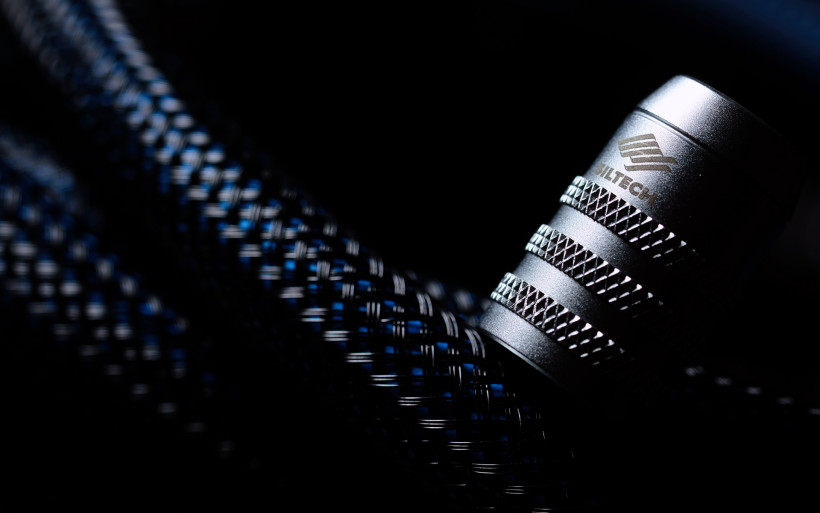 Crown Princess is a specific product. Its presence in a setup is marked clearly, however no particular stunt it pulls, there’s no obvious angle or trick with this one, a listener’s attention won’t focus on a single thing expressed more clearly than the rest. Individuals into such goods might expect one flamboyant act on the pedestal, yet it’s simply not there. The key thing to grasping what Siltech’s anniversary item is all about is this: no showiness at all. Early on its input is mild and some adjustment period is required, most likely several back and forths with any other item of the sort. But past the introductory stage it becomes clear how impactful Crown Princess truly is. It does a lot by not doing much on the surface and such action is what floats my journo boat in just the right way. I simply appreciate goods which reward my attention and investigation with wine alike complexity stretched in time. The Dutch leaves some nice aftertaste, that’s a given, whereas seasoned enthusiasts will find this attitude as exquisite as it’s valuable. At first smoothness increased a notch, then bigger and bolder dynamic contrasts kicked in, and then lifted musical veil and exploded imaging followed. Layers in front of me became more easily differentiated and virtual sound sources shrunk a bit to now be seen as more uniform shapes fully within proportions, not overblown at all. Such voicing leaned towards truth and not flashiness. Every single change listed was in plus in my setup, whereas the audible price to pay for this service was the best one there is. None. This is what quality and refinement in our hobby sounds like and that’s exactly what Crown Princess provided me with.
Crown Princess is a specific product. Its presence in a setup is marked clearly, however no particular stunt it pulls, there’s no obvious angle or trick with this one, a listener’s attention won’t focus on a single thing expressed more clearly than the rest. Individuals into such goods might expect one flamboyant act on the pedestal, yet it’s simply not there. The key thing to grasping what Siltech’s anniversary item is all about is this: no showiness at all. Early on its input is mild and some adjustment period is required, most likely several back and forths with any other item of the sort. But past the introductory stage it becomes clear how impactful Crown Princess truly is. It does a lot by not doing much on the surface and such action is what floats my journo boat in just the right way. I simply appreciate goods which reward my attention and investigation with wine alike complexity stretched in time. The Dutch leaves some nice aftertaste, that’s a given, whereas seasoned enthusiasts will find this attitude as exquisite as it’s valuable. At first smoothness increased a notch, then bigger and bolder dynamic contrasts kicked in, and then lifted musical veil and exploded imaging followed. Layers in front of me became more easily differentiated and virtual sound sources shrunk a bit to now be seen as more uniform shapes fully within proportions, not overblown at all. Such voicing leaned towards truth and not flashiness. Every single change listed was in plus in my setup, whereas the audible price to pay for this service was the best one there is. None. This is what quality and refinement in our hobby sounds like and that’s exactly what Crown Princess provided me with.
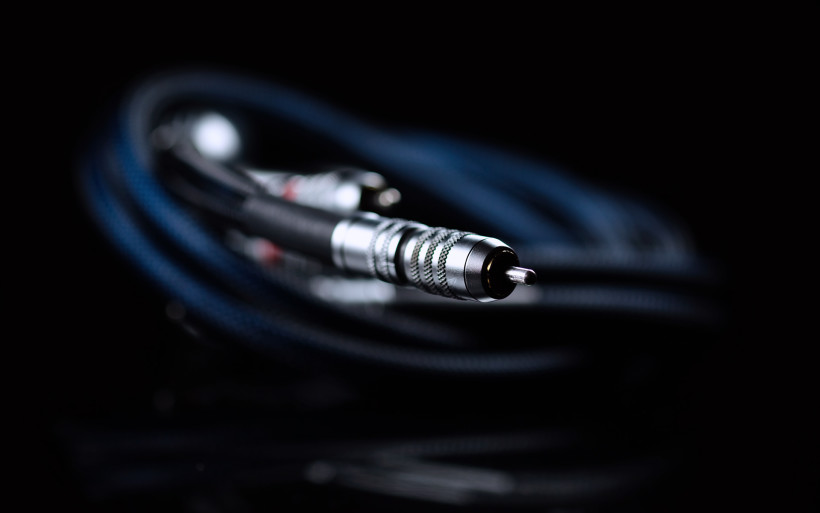 Once the two Audiomica Laboratory Erys Excellence were off duty and Crown Princess on instead, several key things changed at my place. Even though I wrote about this in the past already, I’ll say it yet again: my reference cables were designed to work synergistically with transmission line loaded full-range transducers, hence specimens skinny on their own and as such willing to accept fat and roundness injection from any means available. The Excellence goods address this need via upped softness, colourful texturing, generous density and boosted sizing of key on-stage components. Now to write that the Duch made the view slimmer wouldn’t be just, it tonally and texturally normalized it. The gravity center moved a bit higher, which undoubtedly subtracted several pounds of sheer mass, but now everything seemed tonally a spot on. Vividness increased in the process and openness followed, the proverbial veil was no longer there. To be perfectly clear, I’m far from saying that the Polish performer sounded dark, stuffy and not informatively enough on its own. Not the case at all. However, Crown Princess revealed clearly that something abnormal was on; how many nuances under that thick bassy coat of the Excellence were hid.
Once the two Audiomica Laboratory Erys Excellence were off duty and Crown Princess on instead, several key things changed at my place. Even though I wrote about this in the past already, I’ll say it yet again: my reference cables were designed to work synergistically with transmission line loaded full-range transducers, hence specimens skinny on their own and as such willing to accept fat and roundness injection from any means available. The Excellence goods address this need via upped softness, colourful texturing, generous density and boosted sizing of key on-stage components. Now to write that the Duch made the view slimmer wouldn’t be just, it tonally and texturally normalized it. The gravity center moved a bit higher, which undoubtedly subtracted several pounds of sheer mass, but now everything seemed tonally a spot on. Vividness increased in the process and openness followed, the proverbial veil was no longer there. To be perfectly clear, I’m far from saying that the Polish performer sounded dark, stuffy and not informatively enough on its own. Not the case at all. However, Crown Princess revealed clearly that something abnormal was on; how many nuances under that thick bassy coat of the Excellence were hid.
 The description above might imply that the Dutch silver sounded accordingly to what’s said about voicing of such conductors. To a degree that’s what happened as with this product on-board the result was more open and speedier indeed, yet along with substantial smoothness increase and not the other way around. Polish cables sounded audibly coarser in comparison and the more back and forths were in the past, the more grit was seen with them on duty. In time smoothness revealed itself as one of the major virtues of Crown Princess. With quality recordings, it showed not even a hint of sharpness but painted finely cleaned musical backdrop, which led to very easygoing, pleasant and liquid musical intake. The Polish Roe Deer speakers based on Accuton’s drivers benefited from the Dutch treatment significantly, but that’s not all of it. Crown Princess on the job in my setup netted more organic, moist, natural and truth oriented effect than thus far. At some point I understood that maturity served like so was the general idea behind Edwin’s latest. All this happened along with resolution increase, today’s hero is inherently informational and discerning performer after all, capable of staying as far from any beautifying procedures as possible. It simply shows things as they are, but does so in a very elegant fashion and that’s what sets apart nice cables from truly grand ones.
The description above might imply that the Dutch silver sounded accordingly to what’s said about voicing of such conductors. To a degree that’s what happened as with this product on-board the result was more open and speedier indeed, yet along with substantial smoothness increase and not the other way around. Polish cables sounded audibly coarser in comparison and the more back and forths were in the past, the more grit was seen with them on duty. In time smoothness revealed itself as one of the major virtues of Crown Princess. With quality recordings, it showed not even a hint of sharpness but painted finely cleaned musical backdrop, which led to very easygoing, pleasant and liquid musical intake. The Polish Roe Deer speakers based on Accuton’s drivers benefited from the Dutch treatment significantly, but that’s not all of it. Crown Princess on the job in my setup netted more organic, moist, natural and truth oriented effect than thus far. At some point I understood that maturity served like so was the general idea behind Edwin’s latest. All this happened along with resolution increase, today’s hero is inherently informational and discerning performer after all, capable of staying as far from any beautifying procedures as possible. It simply shows things as they are, but does so in a very elegant fashion and that’s what sets apart nice cables from truly grand ones.
 Siltech’s product went more than one extra mile with nuances extraction, which my reference rig capable on this specific count eagerly showcased. After several hours of tinkering with all interconnects involved it became clear that Crown Princess delivered what its competitor wasn’t quite able to and did so at no cost. The former’s kosher touches were heard in upstairs as well. This FR part was more substantial, differentiated, it decayed a fair bit longer and also scored a point on moisture, presence and vividness. With Boenicke W8 as the only product used, I wouldn’t risk all these praises, but the very unforgiving Roe Deer left no room for guesswork. The two interconnect sets from two vastly different quality tiers clashed, which their asking prices reflected quite accurately if someone asks me.
Siltech’s product went more than one extra mile with nuances extraction, which my reference rig capable on this specific count eagerly showcased. After several hours of tinkering with all interconnects involved it became clear that Crown Princess delivered what its competitor wasn’t quite able to and did so at no cost. The former’s kosher touches were heard in upstairs as well. This FR part was more substantial, differentiated, it decayed a fair bit longer and also scored a point on moisture, presence and vividness. With Boenicke W8 as the only product used, I wouldn’t risk all these praises, but the very unforgiving Roe Deer left no room for guesswork. The two interconnect sets from two vastly different quality tiers clashed, which their asking prices reflected quite accurately if someone asks me.
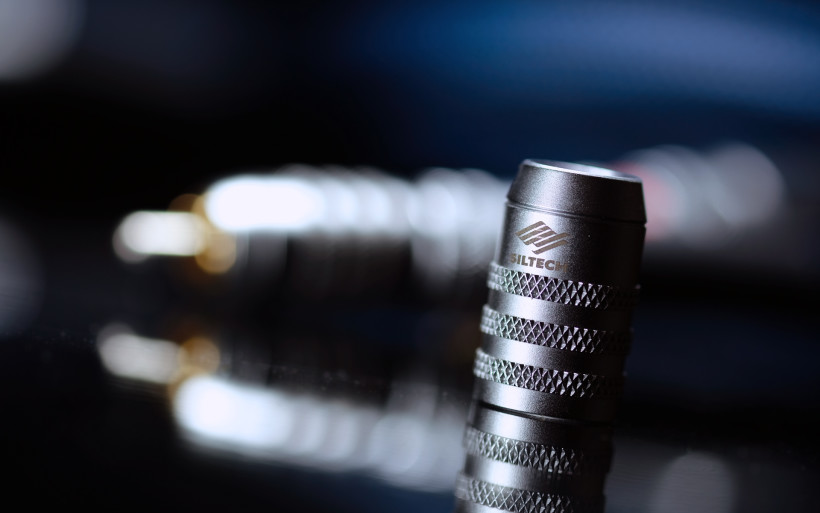 All differences in the downstairs department came without any surprises. Siltech’s product subtracted some of upper region and added presence on the very bottom. In comparison to its opponent, skinnier midbass yet everything below boosted translated to nicely tamed boom at my place and faster attitude; better attack and more low end impulses. Cellos and acoustic guitars along with their boxes expressed eloquently that Crown Princess had the far upper hand. Not variety or amount of these instruments’ reverbs was the case but their control, dynamic scaling range and this particular notion of palpably and effortlessly moving air. Such repertoire the Erys Excellence portrayed in somewhat soft and texturally complex way, but also a bit sleepy, at times sluggish even in direct comparison. The Dutch product the same task executed with more verve, impact and enthusiasm. Put shortly, it kicked harder when this was needed. When more downstairs reach and not overdone but elegant presence up top are added into the mix, it’s quite clear which interconnect set sang more explicitly and with better crack.
All differences in the downstairs department came without any surprises. Siltech’s product subtracted some of upper region and added presence on the very bottom. In comparison to its opponent, skinnier midbass yet everything below boosted translated to nicely tamed boom at my place and faster attitude; better attack and more low end impulses. Cellos and acoustic guitars along with their boxes expressed eloquently that Crown Princess had the far upper hand. Not variety or amount of these instruments’ reverbs was the case but their control, dynamic scaling range and this particular notion of palpably and effortlessly moving air. Such repertoire the Erys Excellence portrayed in somewhat soft and texturally complex way, but also a bit sleepy, at times sluggish even in direct comparison. The Dutch product the same task executed with more verve, impact and enthusiasm. Put shortly, it kicked harder when this was needed. When more downstairs reach and not overdone but elegant presence up top are added into the mix, it’s quite clear which interconnect set sang more explicitly and with better crack.
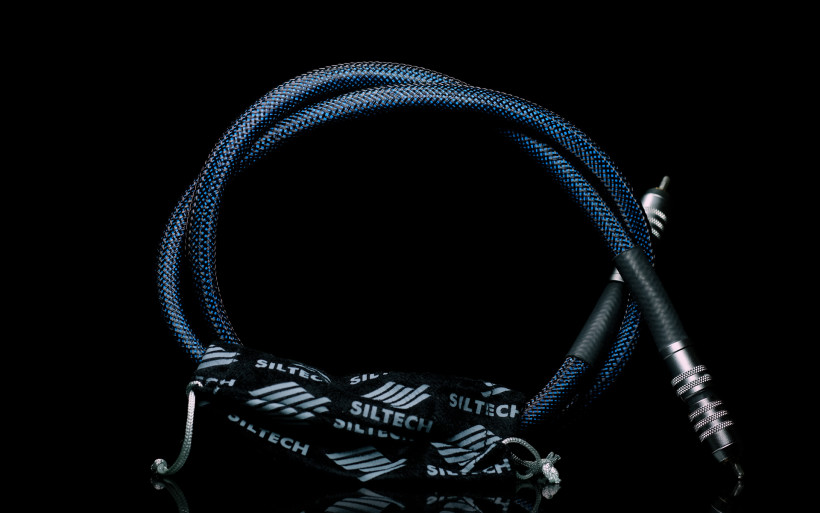 The description above might imply that someone took the effort to make Crown Princess speedier on purpose, though I’m not sold on the idea. True that, with top notch repertoire and truth oriented setup, these cables do sport exciting, agile and pleasantly open attitude, however such voicing I view as a part of a bigger scheme. After several weeks spent with Crown Princess, I think that Edwin was after as balanced set of traits as possible, namely without putting a specific single one above the rest. I believe that the man aimed at safe yet very high level all across the board and careful avoidance of showiness above all else. Siltech Crown Princess could’ve probably had its FR ends elevated, additional liposuction applied to make the effect even speedier, or sound sources more distanced to expand soundstage sizing, most likely at a cost of core content’s dilution. However, all these measures are tricks with some compromises attached and today’s item escapes these big time. That’s the reason why to my ears it’s not only a very coherently and maturely voiced performer, but also one that’s universal and safe. As long as the rest of a setup is up to the task, I see no scenario in which Crown Princess could break something sound wise. Swiftness, agility, textural complexity, adequate heft, elegance and openness it served in sophisticated and smooth fashion and not a single reason it gave to be unhappy.
The description above might imply that someone took the effort to make Crown Princess speedier on purpose, though I’m not sold on the idea. True that, with top notch repertoire and truth oriented setup, these cables do sport exciting, agile and pleasantly open attitude, however such voicing I view as a part of a bigger scheme. After several weeks spent with Crown Princess, I think that Edwin was after as balanced set of traits as possible, namely without putting a specific single one above the rest. I believe that the man aimed at safe yet very high level all across the board and careful avoidance of showiness above all else. Siltech Crown Princess could’ve probably had its FR ends elevated, additional liposuction applied to make the effect even speedier, or sound sources more distanced to expand soundstage sizing, most likely at a cost of core content’s dilution. However, all these measures are tricks with some compromises attached and today’s item escapes these big time. That’s the reason why to my ears it’s not only a very coherently and maturely voiced performer, but also one that’s universal and safe. As long as the rest of a setup is up to the task, I see no scenario in which Crown Princess could break something sound wise. Swiftness, agility, textural complexity, adequate heft, elegance and openness it served in sophisticated and smooth fashion and not a single reason it gave to be unhappy.
Summary
In spite of many attempts to tame privy expectations prior to the very first encounter with Siltech, it didn’t happen. These were rightfully high, its goods are very generously discussed and praised after all. Crown Princess not only delivered it classy on performance count, but also showcased multiple reasons behind enthusiasts’ fondness towards work of Edwin Rijnveld and his team. Now I simply know that this status quo involves no coincidence.
Pleasantly flexible, perfectly manageable and nicely put together, Siltech Crown Princess scores high on assembly and ease of use. Packaging scheme and generously long warranty are also on point. It’s also rather clear that, instead of visual flamboyance, the product was made to do a very specific job and that’s how it’s supposed to be if someone asks me. Such an expense shouldn’t be associated with bling but performance instead, and here’s where Siltech’s anniversary interconnect truly shines.
I’m not going to encourage each financially capable individual to ask no questions but pursue Crown Princess presto instead. Such goods yet this pricey are borderline madness, however I’ll say this: those lucky few after luxury of the sort should know that this review’s hero artfully avoids stereotypes, sings accordingly to its ask and many seasoned enthusiasts will agree with me on these counts past getting familiar with it. This I’m sure of. ‘Till next time!
Associated equipment:
- Amplifier: Accuphase P-4500, Kinki Studio EX-M1
- Preamplifier: Accuphase C-2150
- DAC: LampizatOr Pacific (KR Audio T-100 + KR Audio 5U4G Ltd. Ed.)
- Speakers: Boenicke Audio W8, P&D Acoustic Roe Deer
- Transport: fidata HFAS-S10U
- Speaker cables: Audiomica Laboratory Celes Excellence, LessLoss C-MARC
- Interconnects: Audiomica Laboratory Erys Excellence
- Power supply: Gigawatt PC-3 SE EVO+, Gigawatt PF-2 + Gigawatt LC-2 MK2 + Forza AudioWorks Noir Concept/Audiomica Laboratory Ness Excellence/LessLoss C-MARC
- Rack: Franc Audio Accesories Wood Block Rack
- Music: NativeDSD
Retail prices of reviewed components in EU (incl. VAT):
- Siltech Crown Princess RCA/XLR (1,0m): €3’418
- Siltech Crown Princess Oyaide Focus 1 XLR (1,0m): €3,885
Manufacturer: Siltech


